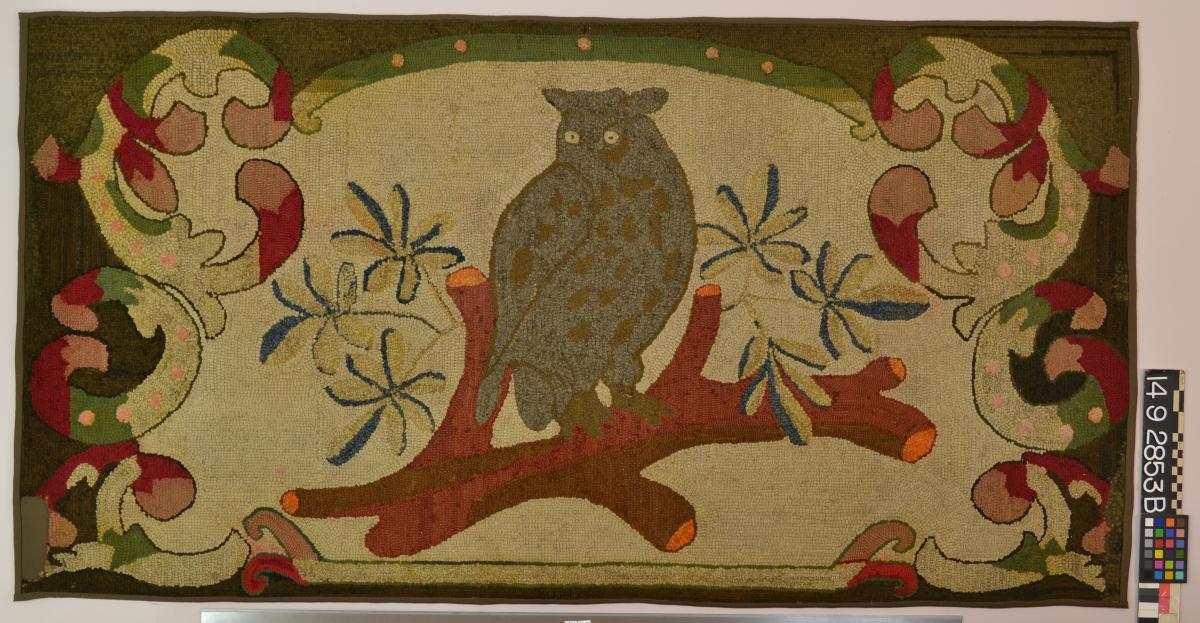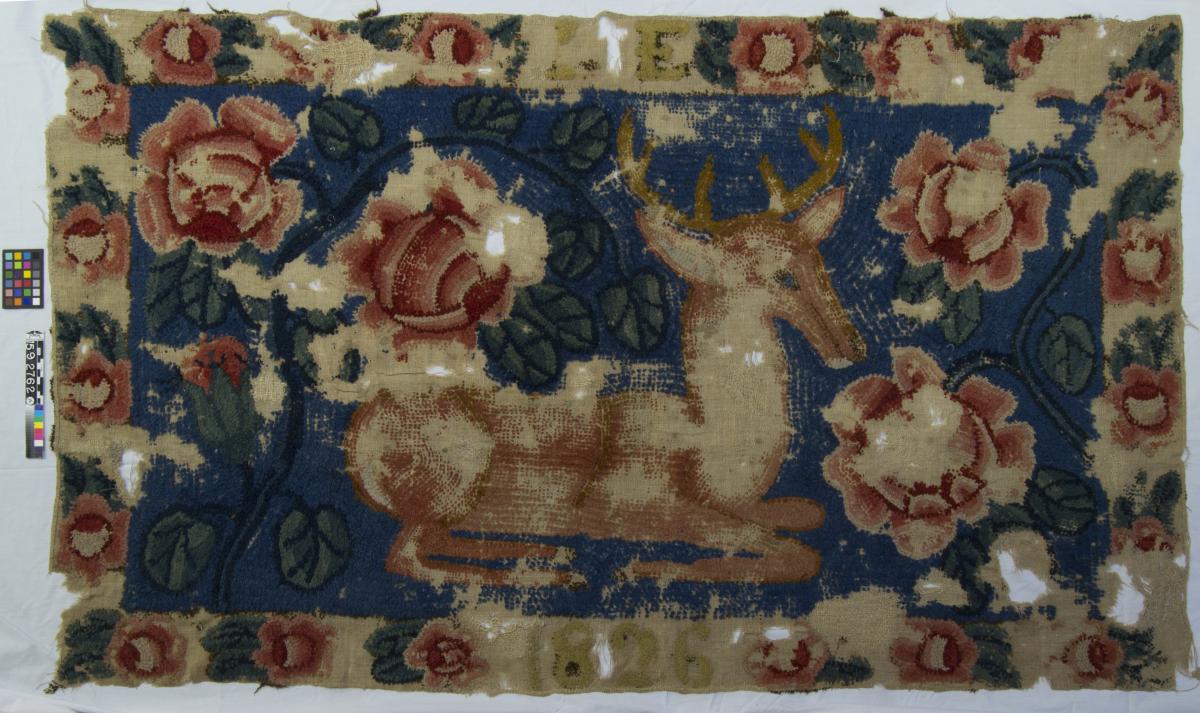Blog Posts | February 1, 2016
Share ThisBy Nancie Ravenel
The Shelburne Museum
The Shelburne Museum’s project to conserve and improve storage for floor covers, funded by an IMLS Museums for America Collections Stewardship Grant, explores various ways to fill holes and worn areas in hooked and yarn-sewn rugs. Traditionally, holes might be patched from a rug’s reverse with a new piece of fabric, allowing new pile to be worked through a patch and occasionally over the edges around a lost section in the fabric. Such plugs can be bulky, however, and may add stress to an already weak original ground fabric, typically made of jute burlap.

A traditional hooked patch on the reverse side of Molly Nye Tobey’s Food for Liberty (1942-1945). Wool on jute. Collection of Shelburne Museum, gift of Joel N., Jonathan S. and Joshua A. Tobey, 1989-26.56. (Photo Courtesy of Shelburne Museum)
Because smaller rugs in the Shelburne Museum’s collection are hung as works of art, project textile conservator Angela Duckwall opts to fill some losses with solid fabric insets. These lightweight fills allow a viewer’s eye to glide over a loss in a given rug, which is often easily mistaken for the original fabric. Angela also worked with transparent fabrics to overlay areas of wear that our curator found visually disturbing.

Artist unknown, Owl. Wool and cotton on jute. Collection of Shelburne Museum, 1999-29. (Photo Courtesy of Shelburne Museum)
Project textile conservator Kirsten Schoonmaker takes the fill one step further by experimenting with sculpted, painted polyester felt plugs on a more contemporary rug. Less bulky than the traditional hooked patch, these plugs do a better job of mimicking the rug’s appearance than a flat insert. Because the plugs are painted, Kirsten can also vary the colors within the fill as needed to complete the design. By stabilizing the edges around the hole in a separate step, the plugs will also be easier to remove than patches would be in the future.
The Deer Rug, a yarn-sewn floor cover dating from 1826 by an unknown maker, posed a different kind of challenge for conservators. After a survey of the rug’s holes, thin areas, and previous repair efforts, textile conservators were concerned that any attempt to restore the rug would result in too much handling and risk further damage. If we did attempt restoration, how far should it be taken? With so much of the image lost, how accurate would a restoration be?

Maker unknown, Deer Rug (1826). Wool on linen. Collection of Shelburne Museum, 1954-601. (Photo Courtesy of Shelburne Museum)
To work through some of these questions, conservation volunteer Eliza West studied the rug from both sides, looking for clues about the missing pattern from holes left in the ground where pile yarn was missing. By importing digital images of the rug into Photoshop, Eliza then made a phased restoration of the missing images. This process allowed her to determine that some missing areas, such as leaves and flowers, could be copied from areas that were largely intact.
Replicating the texture of the rug in areas where no similar, undamaged areas existed proved to be the biggest challenge. Ultimately, Eliza was able to create a series of pre-set brush tools in Photoshop to imitate the different kinds of yarns used to make the rug, and create an informed image of what the rug might have looked like originally.

Completed digital restoration of the Deer Rug, maker unknown,1826. Wool on linen. Collection of Shelburne Museum, 1954-601. (Photo Courtesy of Shelburne Museum)
As Eliza summarized, “The final result of this reconstruction is conjecture. We have no way of saying for certain what the exact details of the design were. But by making educated guesses based on clues left within the rug, we can create an image that shares the spirit, aesthetic, and personality of the original rug.” Indeed, Eliza’s recreation allows us to envision what the rug might have looked like, but preserves our ability to study and learn from the actual object in its current, albeit damaged, state.
Nancie Ravenel is the Objects Conservator at Shelburne Museum in Shelburne, Vermont. Her previous post on the UpNext blog described discoveries made during an IMLS-funded project to conserve paintings from the museum’s collection.
